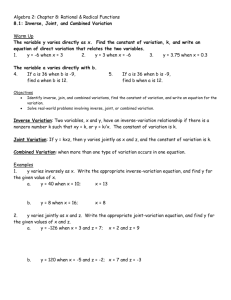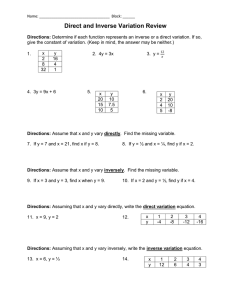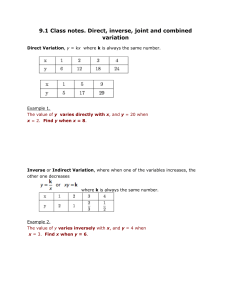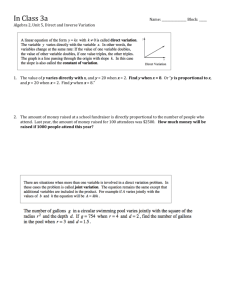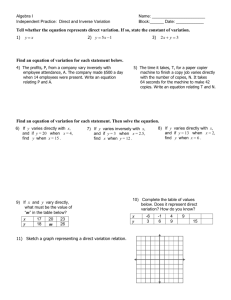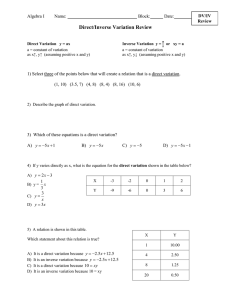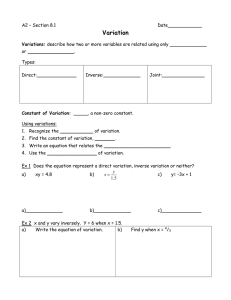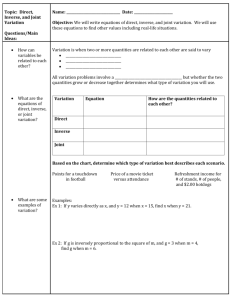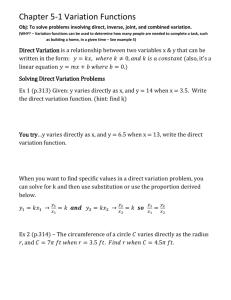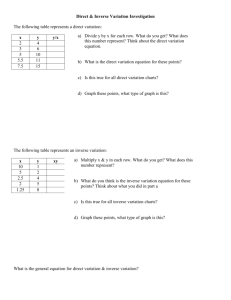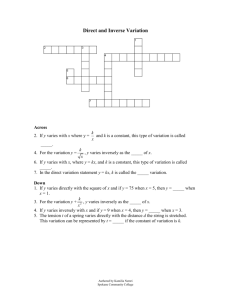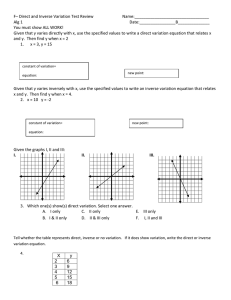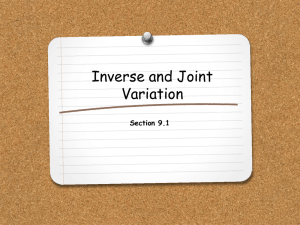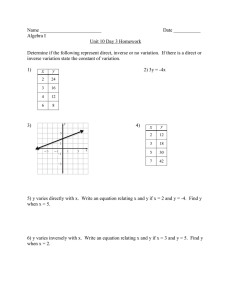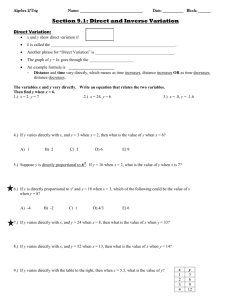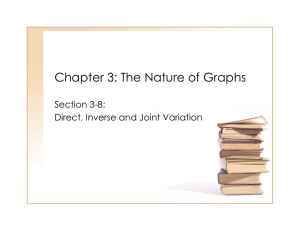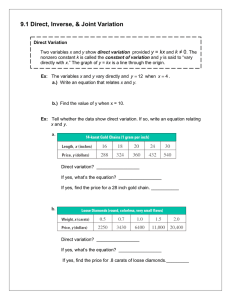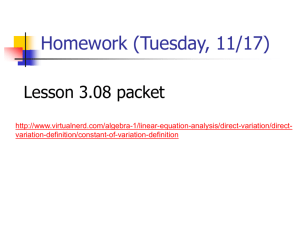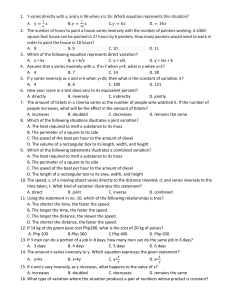5.1 Direct and Inverse Variation
advertisement
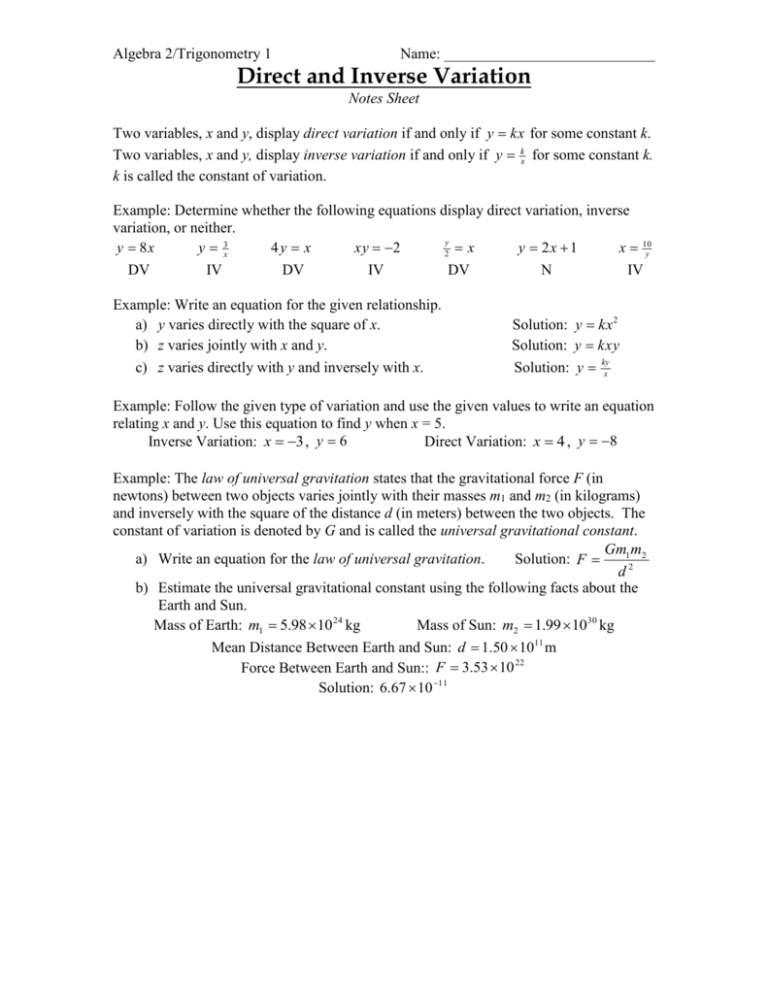
Algebra 2/Trigonometry 1 Name: ____________________________ Direct and Inverse Variation Notes Sheet Two variables, x and y, display direct variation if and only if y kx for some constant k. Two variables, x and y, display inverse variation if and only if y kx for some constant k. k is called the constant of variation. Example: Determine whether the following equations display direct variation, inverse variation, or neither. y x 10y y 8x 4y x xy 2 y 2x 1 y 3x 2 x DV IV DV IV DV N IV Example: Write an equation for the given relationship. a) y varies directly with the square of x. b) z varies jointly with x and y. c) z varies directly with y and inversely with x. Solution: y kx2 Solution: y kxy Solution: y kyx Example: Follow the given type of variation and use the given values to write an equation relating x and y. Use this equation to find y when x = 5. Inverse Variation: x 3 , y 6 Direct Variation: x 4 , y 8 Example: The law of universal gravitation states that the gravitational force F (in newtons) between two objects varies jointly with their masses m1 and m2 (in kilograms) and inversely with the square of the distance d (in meters) between the two objects. The constant of variation is denoted by G and is called the universal gravitational constant. Gm1 m2 a) Write an equation for the law of universal gravitation. Solution: F d2 b) Estimate the universal gravitational constant using the following facts about the Earth and Sun. Mass of Earth: m1 5.98 10 24 kg Mass of Sun: m2 1.99 1030 kg Mean Distance Between Earth and Sun: d 1.50 1011 m Force Between Earth and Sun:: F 3.53 10 22 Solution: 6.67 10 11
